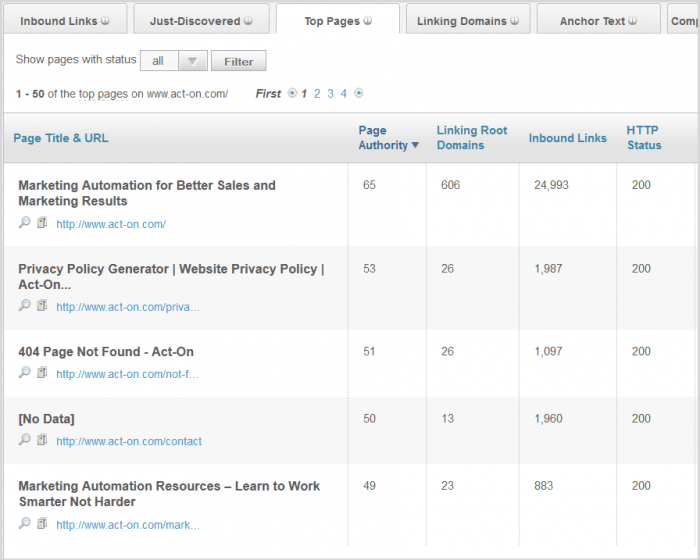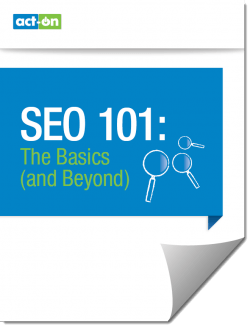Recently I presented a webinar called “SEO in 2014: Fact, Fiction and Sensationalism.” We had so many questions at the end that there wasn’t time to answer them all, so I’m recapping a few of the most popular. (And you can catch up with the on-demand webinar here.)
How important is website load speed?
The design trend is large background photos which make sites load slower. But it looks great.
Indeed, page load speed is an important factor to SEO. Web visitors need a good user experience, and the time it takes to load a page can affect that experience. It’s important to test your site and make improvements to reduce file sizes, externally host or compress elements of your site, and find ways to still have the “bells and whistles” you want – while not compromising speed. Here’s a great article with more information about testing and optimizing page load speed. And if you’d like to test your page load speed, try Pingdom, a free tool I’m happy to recommend.
How do I tell if my backlinks are good or bad?
We have 19,000 of them.
The first step in evaluating your backlinks is to use a mixture of automated tools and the manual eyeball test to review ALL of your links. Yes, all of them. It’s a tedious process, but must be done if you’re to do a full clean up.
First pull the backlinks directly from Google Webmaster tools in addition to third party tools such as Open Site Explorer (by Moz.com) and Majestic SEO (at Vertical Measures we also use ahref.com). Next, put your list of backlinks into a tool like LinkDetox.com, which helps associate a value with the link, looks for qualitative metrics, and spits out a determination based on the software of how toxic or “suspicious” the link is.
Could you explain “paid organic social promotion” in more detail?
Great question! This concept was developed by Marty Weintraub; his original article can be found here on the aimClear blog. The concept is this: On today’s social networking platforms, the trend is to show your organic posts less and to show advertisers’ posts more. Annoying for the user, but social networks are in the business of making money, right? A growing number of social networking sites (most notably including Facebook) are opting for this model.
What Marty suggests is that business owners who have pages and participate on sites like Facebook rethink how they use social. He recommends promoting what used to be the preferred organic social post using paid means. He calls this “paid organic social distribution” or promotion, and in short, it’s the act of taking a post that would otherwise be organic and putting funds behind it to amplify the message. It’s the new way of using social media for business, a required shift due to the reduced visibility organic posts receive today and will in the future. This article on Search Engine Land also discusses this trend of paid social media taking over as the new paid SEO.
I heard that Google+ is going away.
Google+ is here to stay … but that’s certainly not to say Google would never change its mind and shut the platform down. Over the years Google’s had flops like Orkut, Jaiku, Google Wave, and Google Buzz.
Just as with any social networking site you have to realize you don’t own the content you post; they do. If a site such as Facebook were to shut down, and if you hadn’t saved backups of your content, it could (theoretically) be lost forever. It’s a risk every business owner should understand.
Does this mean you should stop using the platform? Certainly not. There are preventive steps you can take to preserve or back up the information you’ve built over the years. This article can provide you with additional information to help you prepare, in case this risk worries you and your stakeholders.
Any advice for how a business can best use Google+ as a business?
Google+ can be a great platform to use. Just like Facebook or Twitter, you can use it to build a community online that helps drive traffic and awareness about your brand. Additionally, some people suspect that using Google+ pages for businesses may help rankings. Determine who your audience is on the platform and start using it to garner their attention.
In order to avoid being penalized, avoid using any tactics that may appear spammy on Google+. This is not a platform to build links or artificially improve the pluses (+) on a piece of content. Simply, this is a platform – just as Facebook– to engage with your customers.
Every social network has their terms of service to abide by. Facebook doesn’t allow a myriad of things that Twitter does and vise versa. The additional Google+ terms of service are here, and the entire terms of service are found here. Make sure you are following the restrictions on items you can and can’t share, contests and ads restrictions, as well as information about suspension and termination.
What tool can help you find the most linked-to content on your competitor’s site?
OpenSiteExplorer.org, a tool by Moz, has a report called “Top Pages.” When you go to OpenSiteExplorer.org and put in your competitors domain, click search and look for the Top Pages tab, third from the left. Here’s what that report looks like: It lists the top pages on the domain, as defined by having the most total and unique linking root domains pointing to them
Take a look at the most linked-to content on your competitor’s websites, do some analysis, and consider the results as possible ideas for your own content. I can’t tell you how many times I have simply done this and found hundreds of ideas as a result – simply by seeing what a few competitors do and doing it better.
Should keywords appear on all pages, or only the home page?
What are the best keyword research tools?
It’s important to optimize your website for the keywords you want to be discovered for. It’s less about having keywords on all pages and more about having a clear and focused approach to the content on your site. Each page should ideally target a keyword, so part of the answer to the question is yes. You do want keywords identified on your pages, but I want to strongly caution you against going hog wild with optimizing your site for specific keywords.
This guide on keyword research is an excellent precursor to the work you may have ahead of you. The old trend of packing your site with keywords is over– it just doesn’t work anymore. Be judicious about your choices and always, always, always keep the user in mind! The last thing you want to do is to optimize for search – but not actually provide value for your visitors. That’s a form of bait and switch.
Google Adwords Keyword Planner is a tool many SEOs use to review the search volume and competitiveness of keyword phrases. You’ll need to have an Adwords account to get access, but it’s worth the trouble; the planner gives you a plethora of information. Additionally, SEMRush.com is an excellent platform. Type in your competitor’s URL, and you can their top organic and paid keywords, plus organic and paid traffic. The free report is limited, but they sell more advanced information. Each of these tools can help you get a feel for which keywords your competitors are ranking for, which keywords you aren’t ranking for currently, and what you should focus on in the future.
Keyword research can also spark ideas for content marketing. You might notice, for example, long tail phrases (such as questions) start to pop up. Develop content with one of these as the title, and answer the question! You know someone was looking for that very phrase, so you’ve got a good chance of fulfilling that searcher’s intent.
Also: Look at Google Analytics and follow best practices to track your own referral traffic and conversions. Monitor your successes as well as failures to run the best campaigns possible for the ROI.
Have more SEO questions? Visit the Act-On Center of Excellence to read past bog posts and papers, including “SEO 101: The Basics (and Beyond).”



